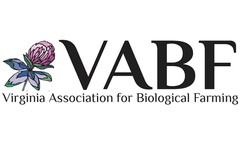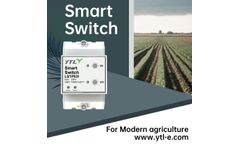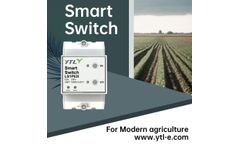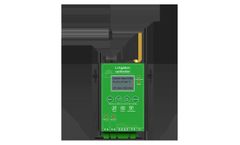Smart Sensors For Agriculture Articles & Analysis
19 articles found
Water plays a critical role in agriculture, serving as the lifeblood for crops and soil, and is essential for growing food. However, natural rainfall is often unpredictable, insufficient, or unevenly distributed across regions, making irrigation systems a vital component of modern farming. With effective irrigation, many farmers would be able to produce enough crops to meet both local and global ...
The ThirdEye project supports farmers in Mozambique and Kenya with their decision making in farm and crop management by setting up a network of flying sensors operators. Our innovation is a major transformation in farmers’ decision making regarding the application of limited resources such as water, seeds, fertilizer and labor. Instead of relying on common-sense management, farmers are now ...
We We are partnering with Southern Piedmont organic and conventional diverse vegetable farmers through an enhanced incentives program. Farmers will be asked to add cover crops to their vegetable rotation. We will monitor greenhouse gas emissions, soil health benefits, economic impacts, and social barriers to the adoption of using cover crops versus not using cover crops on their fields. This ...
The Smart Electricity Meter plays a significant role in assisting smart agriculture by providing real-time monitoring and analysis of farm electricity usage, precise agricultural management, automation and mechanical assistance, artificial intelligence and data analysis, and sustainable and environmental development. 1. Real-time Data Monitoring and AnalysisThe Smart Electricity Meter can monitor ...
As an important part of smart technology, the application of smart switches in modern agriculture is increasingly widespread. ...
In the face of these challenges, climate-smart agriculture has emerged as a holistic approach to sustainably increase agricultural productivity, enhance resilience to climate change, and reduce greenhouse gas emissions. ...
ByJXCT
However, the 21st century has ushered in a new era in agriculture, one driven by data and innovation. At the forefront of this revolution are intelligent soil sensors, small, sophisticated devices that are transforming the way we grow our food. ...
Abstract: With the rapid development of precision agriculture, the application of smart soil sensors has become an important part of modern agricultural production. ...
Introduction Agriculture is the lifeblood of our civilization, providing sustenance and resources essential for human survival. ...
Summary: With the development of intelligent agriculture in the Internet of things, many agricultural sensors appear in agricultural environmental monitoring, among which illumination sensor is a more important one.The sensor measures the intensity of light, which affects photosynthesis and, in ...
Date: Jun 2022 - Jun 2023 PENFA *Pesticide Environmental Fate Analysis* Project Pesticides played an irreplaceable role during agriculture production and the efforts to feed the ever-growing population. Their excessive use has been harmful to crop production, food safety, and human health. Globally, high attention has been given to pesticide residues and specific regulations have been regularly ...
Types Of Smart Sensors For Agriculture Rapid social development, climate change, reduced rainfall and increased demand for food have all had a big impact on agriculture. ...
What is smart farming? Smart farming is the application of Internet of Things technology to traditional agriculture, using sensors and software to control agricultural production through mobile or computer platforms, making traditional agriculture more “smart”. ...
Farmers, food manufacturers, agronomists, and agricultural politicians who want to improve output and profitability would benefit from space-based technologies for climate-smart agriculture. ...
At the 2021 Cool Farm Alliance Annual General Meeting, Hal Hamilton, Co-Founder at the Sustainable Food Lab, moderated a thought-provoking session on “Enabling change – leverage points to scale regenerative agriculture and GHG emission reductions” with leading stakeholders from the agri-food industry and members of the Cool Farm Alliance: Luc Beerens, Global Sustainable ...
Introduction To meet the demands of a growing, increasingly urban global population (approximately 9 billion by 2050), the World Bank calculates that global food production must increase by 70% in the next 35 years. This is a great challenge not only because of the volume of food that must be produced, but because agricultural conditions will not remain constant or predicable in the years to ...
In rural Kenya, where it may only rain twice per year, farmers and herders are embracing so-called “climate-smart” agriculture. The video above, produced by the World Bank, begins by showing how John and Mary Obuom have transformed their one-acre farm into a model of sustainable practices. The family plants a diversity of crops in case one or more fails in a given year. A thicket of ...
ByEnsia
Durable food security and agricultural growth depend on development strategies with resilience built in from the start, says Gordon Conway. Economic growth with resilience to environmental threats will be central to the agenda of the UN Conference on Sustainable Development (Rio+20) in June this year, which aims to map out a pathway of sustainable development for the planet. The 'zero draft', ...
Production of staple crops, such as maize, is under increasing risk in Africa because of climate change and depleting soil fertility. The potential consequences for food security are dire. Climate change and food security must be tackled together. Modern methods of agroforestry and “conservation agriculture with trees” are employing age-old indigenous practices of natural ...















